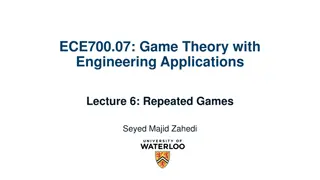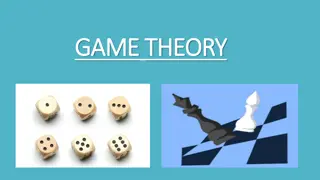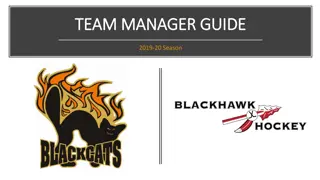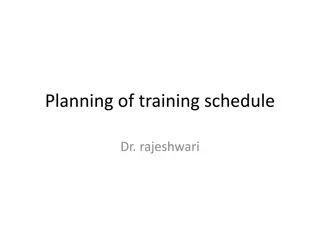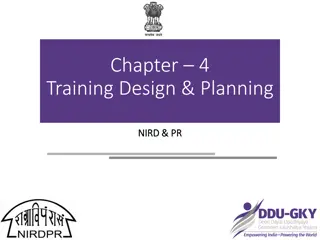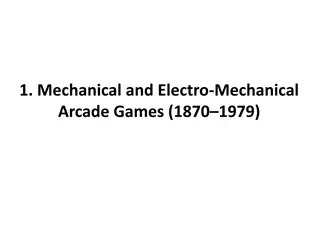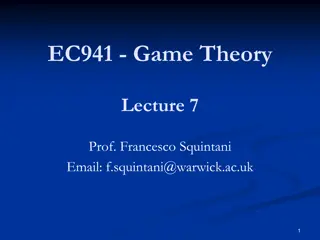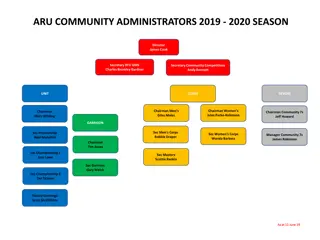Effective Season Planning and Training Strategies for Gaelic Games
Explore the key elements of season planning including periodisation, team functions, game characteristics, season division, and appropriate physical training for Gaelic games. Learn about the importance of shifting training priorities, developing game insight, and maintaining optimal physical load for players to enhance performance and prevent overtraining. Discover the unique training considerations for Gaelic games compared to traditional running events.
Download Presentation

Please find below an Image/Link to download the presentation.
The content on the website is provided AS IS for your information and personal use only. It may not be sold, licensed, or shared on other websites without obtaining consent from the author. Download presentation by click this link. If you encounter any issues during the download, it is possible that the publisher has removed the file from their server.
E N D
Presentation Transcript
Periodisation Periodisation: How to Plan your : How to Plan your seasons Coaching. seasons Coaching. What is periodisation? Periodisation involves shifting training priorities from non- games-specific activities of high volume and low intensity to games- specific activities of low volume and high intensity over a period of weeks/months/years to prevent overtraining and optimise performance.
What are the 3 main functions of your What are the 3 main functions of your team? team? -Attacking -Transitioning - Defending
What are the 4 main games What are the 4 main games characteristics on which all our training characteristics on which all our training should be based? should be based? i.e. attempt to incorporate as many of these into our games/drills as possible? 1. Communication verbal & non-verbal 2. Game Insight - Decision Making 3. Technical execution with decisions 4. Games Fitness v Athletic Fitness
How Might you Divide your season up? How Might you Divide your season up? Preparatory- Pre-Season Transition- Pre-Competition Competition- Completive Season Maintenance- Maintaining Present Levels Peaking 1stChampionship Match Active rest- 2 weeks nothing then light exercise before starting again
Why is physical training like running Why is physical training like running 200/400/800m not suitable for Gaelic 200/400/800m not suitable for Gaelic games? games? It makes no sense for football players to run 400, 800. 1,200 or even more as these are tempo runs and do not overload the football characteristic Quicker Recovery between Actions as players are not forced to catch their breath quicker. Running trains the wrong system & uses oxygen to work while in playing football oxygen is used to recover. It also has a negative effect on fast twitch muscle fibres as footballers need fast twitch muscles in order to perform maximum explosive actions.
What is the maximum load for a Gaelic What is the maximum load for a Gaelic player player maximum number of maximum number of games/sessions any player should do games/sessions any player should do in a 7 day period? in a 7 day period? The simplest method is to quantify physical load in number of games. That is, if a player completes a full match, their physical outputs in this match will be equal to 1 Match. II. The same applies to an overload conditioning session, this also equals 1 match. III. In a 7 day period an individual should accrue no more than the physical load equivalent to 3 Matches - 7 Day Period < 3 Matches I.
All training programmes should All training programmes should incorporate the FITT principal. What incorporate the FITT principal. What does FITT stand for? does FITT stand for? Time total time of workloads should gradually increase as you get fitter Intensity - this work is to be trained at from low, medium to high i.e. about 70% if you are not very fit 8o% if you are, to 90% in all efforts as you get fitter Frequency i.e. the number of sessions per week from 1 to 2 to 3 to 4 etc. Type Use ball/games or against a team-mate related tasks as much as possible rather than non-games tasks i.e. lapping pitches, running up mountains, 200m tempo runs, 20/30m sprints etc. Rest Between sessions, sets, repetitions, games, training etc. in order for body to adapt for next session otherwise you will get injured or burn out will occur.
How might coaches vary the intensity How might coaches vary the intensity of their sessions? of their sessions? Coaches can use the different game formats to increase or decrease the intensity of their training Use Football Specific Exercises: Vary the Number of Players 3 v 3 to 15 v 15 Change the Size of the Pitch small to medium to full pitch with 15 v 15 Adjust the Work-Rest-Ratio Improving Tactical Components for improving football fitness & football performance in developing team play. The 15 v 15 game is always the starting point as players have to deal with all the characteristics of football. In 15 v 15 or 4 v 4 the players still need to work on the 4 Fitness characteristics Max. Explosive Actions Quick Recovery Between Actions Maintain Many Actions per minute during the entire game but Still retaining the football tactical elements of the game. As this is not always the best means for training the various characteristics we have to use other methods but retaining as many of the games actions as possible. The coach can specifically overload either the tactical, technical or fitness components within games exercises.
What effect does different game What effect does different game formats have on the intensity at which formats have on the intensity at which players train? players train? 4 v 4 games little tactical structure players play mainly 1 v 1 which allows for intense movement. 5 v 5 Start to form a structure so play becomes more tactical with play moving laterally rather than just mainly forward, so intensity drops. In 6 v 6 & 7 v 7 games actions per minute are gradually decreased as in 7 v 7 games players tended to play in two lines of three until 8 v 8 where there is another drop in intensity again due to tactical behaviour of players. 9 v9, 10 v 10 & 11 v 11 games where similar. As games 2 v 2/1 v 1 based on lactic acid measurements & non- football specific are too severe & do not represent what happens during a game but fit perfectly in the category Intensive Interval training.
Sprinting When and how? Set 1: 6/10 sprints (preferably against someone in competition for a ball played by a team-mate) x 5m x 30 Sec Rest between each Reps. x 4 min. Rest between each Set So only 6 sprints in week 1 then build to 10 sprints over the next nos. of weeks. Do likewise with rest below. Work on your kicking/scoring technique during your 4 min. rest period (Only a little fuel is used for 5m & the 30 Sec Rest allows 100% Max. Efforts) & the short distances prevent hamstring injuries. Set 2: Build to - 4/8 Sprints x 15m x 45 Secs between each sprint x 4 mins between sets Set 3: 2/6 Sprints x 25m x 60 Secs Rest between each sprint & 4 mins between each set. As the season progress more volume can be included as the body adapts each week to the new load. The best time to do this in the training session is just after the warm up when players are fresh and not at the end of the session when players are fatigued.
Adding a ball? Pitch Sizes: The pitch size can determine the intensity of games played as well as the numbers of players and untimely the training effect being coached. If we take a pitch to be 150m x 80m then each of the 14 outfield players would have 10m x 6m = 60m each. So for each game the number of outfield players can be determined from this i.e. 4 v 4 with 3 outfield players would equal a pitch size of 30/40m x 20/30m where as a 7 v 7 game would be 70/80m x 45m across the pitch using the 45m line and side lines. The coach can change the length or width to suit the training of different football characteristics involving game plans, set plays intensities etc.
The Principle of Football The Principle of Football Periodisation Periodisation: : Here is an example of how you might incorporate the different training methods shown above. Notice in weeks 1 & 2 we use the 15 v 15 games in blocks of 10/15mins to prepare the players for the more intensive work in the following weeks in weeks 3 & 4 & 5 & 6.















